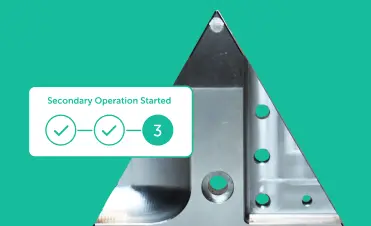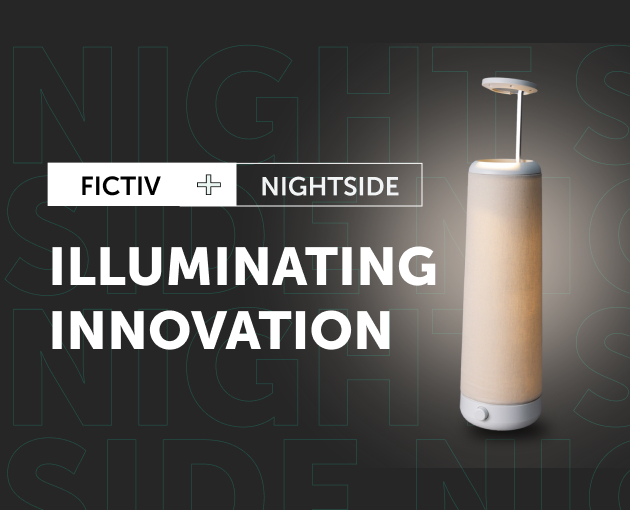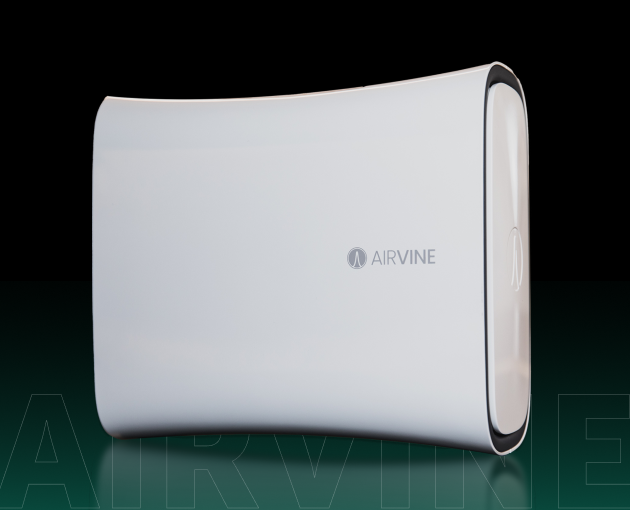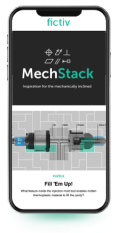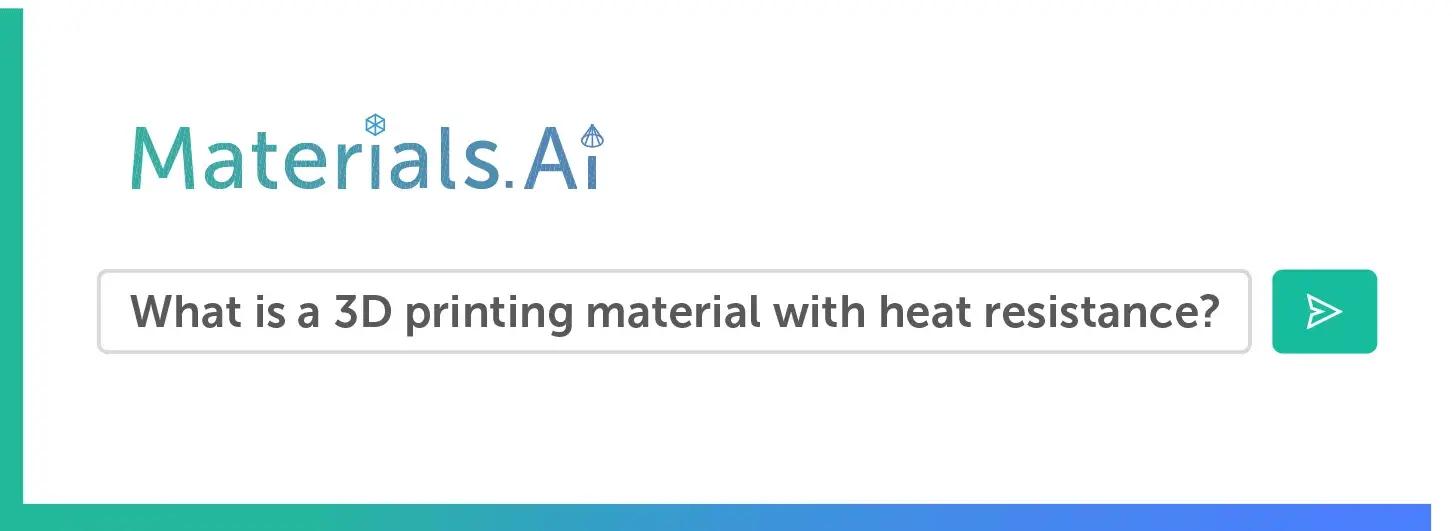Time to read: 7 min
As additive manufacturing expands beyond rigid plastics, flexible materials are redefining what’s possible—from soft robotic joints to wearable tech. Flexible filaments or source materials enable the printing of functional parts that require flexibility and shock absorption, conformability, and durability under repetitive strain. For mechanical engineers and product designers involved in applications such as robotics, consumer electronics, and medical devices, learning about and working with these materials is a vital step toward prototyping with 3D printing and fabricating advanced components.
This article provides an engineering overview of the types of flexible materials, their properties, and design considerations to follow from conception to successful production.

What Makes a 3D Printing Material Flexible?
Flexible materials or elastomers represent a category of 3D printing materials characterized by a low Young’s Modulus and high fracture strain. In contrast to rigid plastics, which can break in bending, flexible elastomer materials are viscoelastic. For this reason, elastomers can deform significantly and still return to their original shape.
Key behavioral differences from rigid 3D printing materials are:
- Energy Absorption: They are incredibly effective at dampening vibrations and absorbing energy from impacts.
- Conformability: They will seal against uneven surfaces and remain nonslip.
- Durability Under Strain: They can be bent and flexed repeatedly without damage.
Types of Flexible 3D Printing Materials
Choosing the right material entails understanding the trade-offs among flexibility, durability, and printability. Before diving into the type of flexible materials, it is important to distinguish between TPU and TPE. While TPU and TPE are frequently used interchangeably, they actually do mean different things.
TPE stands for thermoplastic elastomer and is a general class of filament. Filaments sold as “TPE” are typically quite soft and can be very difficult to feed, causing jams in almost any but the most optimized direct-drive extruders.
TPU (thermoplastic polyurethane), on the other hand, is a type of TPE that has been specifically engineered. It is generally stiffer than many types of TPE, more resistant to wear, and much simpler to print with. For many engineering applications, it has become the de facto standard, and most 3D printing filaments are TPU.
There are several other flexible 3D printing materials beyond TPU, as compared in Table 1 below.
| Material Type | Key Characteristics | Shore Hardness (Typ.) | Best For |
| TPE (Thermoplastic Elastomer) | A broad class of polymer blends. Typically very soft, gummy, and highly elastic | ~20A–70A | Soft gaskets, ultra-soft grips, wearables |
| TPU (Thermoplastic Polyurethane) | A subset of TPE. Offers a superior balance of flexibility, durability, and printability. The industry standard for functional flexible parts | ~85A–98A | Protective cases, drive belts, robotic wheels |
| Flexible PLA (polylactic acid) | Standard PLA modified with plasticizers. Easier to print than TPE/TPU, but less flexible, somewhat springy, and brittle over time | ~90A–95A | Concept models, non-critical semi-rigid prototypes |
| Soft Nylon (e.g., Nylon 618) | Offers a unique combination of flexibility, high strength, and abrasion resistance of nylon (less “rubbery,” more resilient/springy) | ~70D–80D | Living hinges, functional gears, snap-fit enclosures |
| Specialty Elastomers (e.g., PEBA) | High-performance materials offering superior elasticity, low density, and excellent chemical/heat resistance | ~40A–70D (depending on the grade) | High-performance athletic equipment, automotive under-hood components |
Table 1: TPE vs. TPU vs. Flexible PLA vs. Soft Nylon vs. Specialty Elastomers
Note: Shore D materials (e.g., Nylon 12 at 70D–80D) are significantly harder—comparable to semi-rigid plastics—whereas Shore A materials (e.g., TPU 95A) are rubber-like.
Choosing the Right Flexible Materials for 3D Printing
When selecting a material for your project, evaluate these core properties from the technical data sheet (TDS):
Shore Hardness
Durometer, or shore hardness, refers to the material’s resistance to indentation. The Shore A hardness scale runs from soft (0A) to hard (100A). An example of a standard desktop TPU would be 95A—the hardness of a shopping cart wheel—while a soft TPE might be 30A, similar in feel to a running shoe sole. The Shore D scale is for harder plastics.
Elongation at Break (Fracture Strain)
Fracture strain is the percentage of stretching that a material can withstand before it ruptures. Elongation greater than 450% (for TPU) indicates high elasticity and toughness, essential for parts that are manipulated or mechanically stretched or compressed—such as shoes, seals, or shock-resistant automotive applications like impact strips in car bumpers.
Tensile Strength
Tensile strength is the maximum static stress that occurs when a material is stretched until it ruptures. This property is usually lower than that of rigid plastics, but ensures that the part can be used under constant tension.
Rebound/Resilience
A material’s ability to return to its original shape after a state of deformation. Materials like PEBA have good rebound and resilience, returning with minimal damage and energy loss.
Heat Resistance (HDT)
The Heat Deflection Temperature will be important if the part is to operate in an environment where it will endure heat, such as in an electronic enclosure or under the hood of a vehicle.
Table 2 summarizes the recommended applications and printing tips, and processing methods of various flexible materials:
| Application / Use Case | Recommended Material | Printing Method | Shore Hardness (Range) | Key Advantages | Print Settings / Tips |
| Wearables (bands, straps, grips) | TPU (Thermoplastic Polyurethane) | FDM / SLS | 85A–95A | Excellent elasticity and abrasion resistance | Nozzle: 230 °C, Bed: 40-60 °C, Slow speed (20–35 mm/s), minimal retraction |
| Soft gaskets, seals, vibration dampers | TPE (Thermoplastic Elastomer) | FDM | 60A–90A | Softer feel, high elongation, impact damping | Nozzle: 220–250 °C, Bed: 40-60 °C, direct drive extruder recommended |
| Semi-flexible housings, snap fits | Flexible PLA | FDM | 90A–95A | Easy to print, moderate flexibility | Nozzle: 210–230 °C,Bed: Standard PLA settings, low infill for added flex |
| Industrial-grade flexible components | Soft Nylon (PA12) | SLS | 70D–80D | High fatigue resistance, durable | Use powder-bed fusion for isotropic strength, and maintain dry powder conditions |
| Precision small flexible parts | Elastic or Flexible Resins (e.g., Formlabs Elastic 50A, Flexible 80A) | SLA / DLP | 50A–80A | High detail, great for small-scale production | Requires UV post-curing; print slower for tear resistance |
| Overmolded- style parts (rigid + soft zones) | Multi-material (TPU + PLA/ABS) | FDM (dual extrusion) | Varies by setup | Combines rigidity with soft-touch grip | Align layers carefully; ensure proper interlayer adhesion |
| Functional hinges and living joints | TPU or Nylon | FDM / SLS | 85A–95A / 70D-80D | Flex fatigue resistance, high tear strength | Ensure proper layer orientation (hinge axis parallel to bed) |
| Medical or biocompatible components | Bio- or Medical-Grade Filament | FDM / SLS | 80A–95A | Skin-safe, sterilizable | Dry thoroughly before printing; validate with FDA-compliant filament data |
Table 2: Flexible Material Selection Matrix
Table 3 compares three common 3D printing methods:
| Process | Best For | Material Examples | Engineering Considerations |
| FDM | Cost-effective prototyping, jigs & fixtures | TPU, TPE | Limited geometric freedom, visible layer lines, and anisotropic mechanical properties |
| SLS | Complex, production-grade flexible parts with high durability and isotropic properties | TPU (Powder) | No support structures needed, excellent and consistent mechanical properties, higher cost, grainy surface finish |
| SLA | High-detail, rubber-like prototypes requiring smooth surfaces and fine features | Flexible Resins | Can achieve very low Shore hardness, excellent surface finish, but parts are often less durable and can degrade with UV exposure and humidity |
Table 3: FDM vs. SLS vs. SLA for Flexible Parts
Want to learn more about how to select the best materials for your 3D printing project? Check out our Guide to 3D Printing Materials and Applications.
DFM Guidelines for Flexible 3D Print Geometries
Design for Additive Manufacturing (DfAM) is essential when working with elastomeric materials. Poor geometry choices and print setup are the primary reasons for print failure and weak parts. Follow the tips below for the proper design of 3D-printed parts with flexible materials:
Avoid Sharp Corners
Sharp internal corners concentrate stresses and are the most common initiation point for tearing flexible parts. Use smooth, generous fillets with a radius of at least 1–2 mm to help distribute stress.
Control Wall Thickness
Small wall thicknesses are not durable and may cause printing issues. At the same time, very thick walls can sag excessively and take a long time to print. For most parts, a minimum wall thickness of 1.2–2.0 mm is reasonable (3–5 perimeters/0.4 mm nozzle). If compression pads or compression seals are being printed, ensure the wall thickness is greater than 2 mm and evenly distributed.
Control Overhangs and Bridges
Flexible materials sag more than rigid plastics. Keep unsupported angles or overhangs at angles less than 45 degrees to support a more vertical build. If bridging, consider reducing print speed or increasing cooling distance from the nozzle—especially for heavier materials.
Minimize Support Interfaces
Flexible supports can be very difficult to remove and will often result in a poor surface finish (internal porosity). Design parts to be self-supporting when possible. If not, consider orienting the print to minimize the number of supported surfaces. If needed, increase support Z-distances to create a 0.3 – 0.5 mm easier-to-remove interface.
Functional Design Features
Use a thin, consistent section (0.2–0.5 mm) for living hinges and orient it parallel to the build plate for the best adhesion between layers for the hinge. For snap-fits, have longer and more flexible cantilevers than you normally would with rigid plastics, because the material is compliant and does not require as much bending stress.
A low to moderate infill percentage (10–40%) is recommended. Gyroid or rectilinear infill patterns are great choices for flexible materials because they allow compression and flexing throughout the part. Avoid grid patterns that will create stiff, high-stress areas.

Post-Processing Notes:
- SLS TPU parts often benefit from media blasting or vapor smoothing.
- SLA resins may require post-curing to achieve full tear strength.
- FDM TPU parts may need trimming or acetone-free cleaning to avoid residue.
From Prototype to Production-Grade Parts – Fictiv is Flexible
Transitioning from a successful desktop print to a dependable production-grade flexible part requires controlled processes and expertise. Inconsistent extrusion, variations in ambient temperature, and anisotropic properties can all make FDM prototypes unsuitable for final use.
This is where Fictiv’s 3D printing service provides an advantage. We deliver professional-grade TPU and flexible resin printing services with consistent, quality parts and expert DfM analysis included in every quote.
Our network of manufacturing partners will ensure your flexible components—whether soft-touch consumer electronics, functional robotic grippers, or compliant medical device prototypes—are made to your exact specifications with fast turnaround times.
Need flexible prototypes or soft-touch components? Upload your CAD for free to get started.
